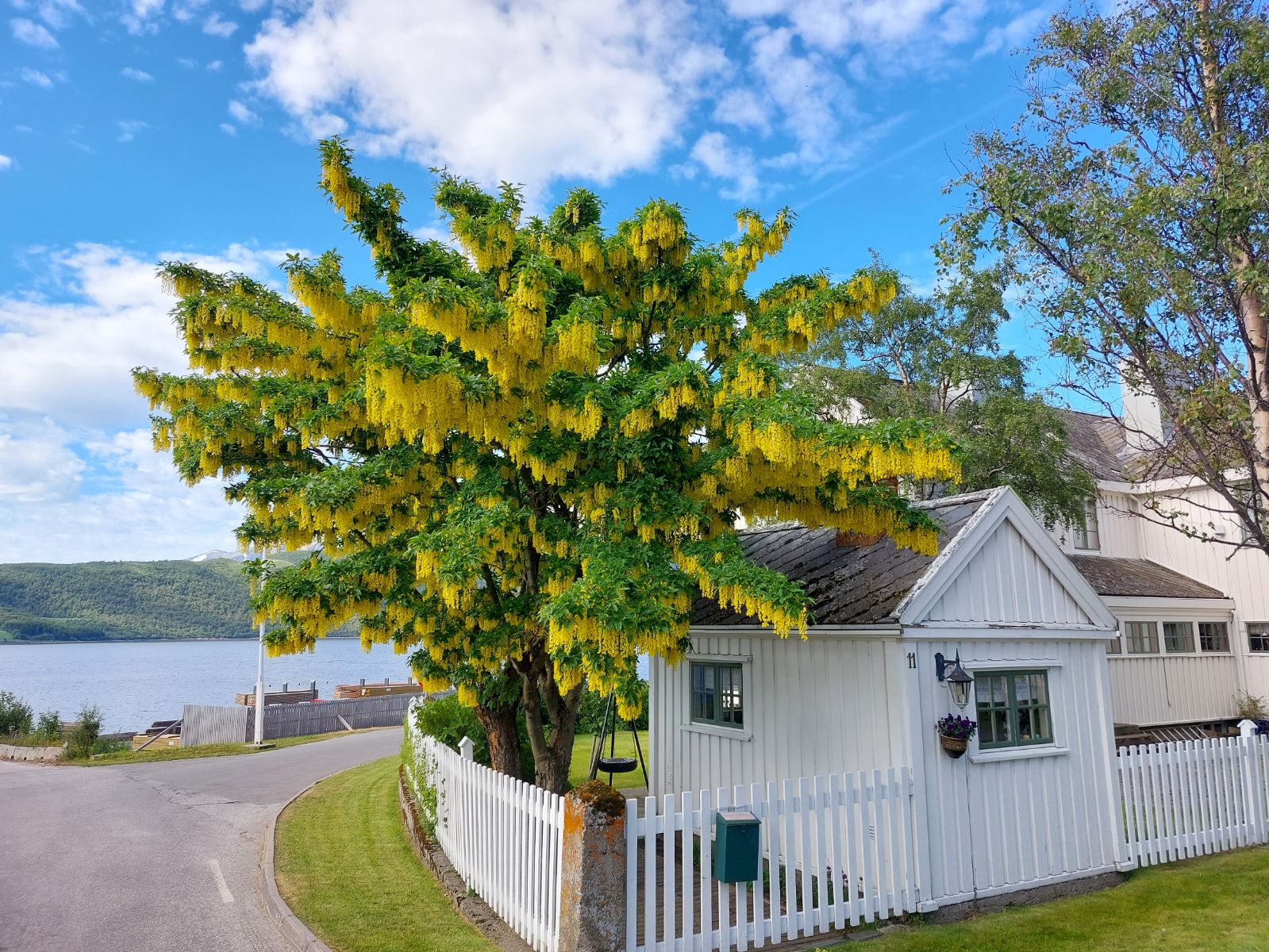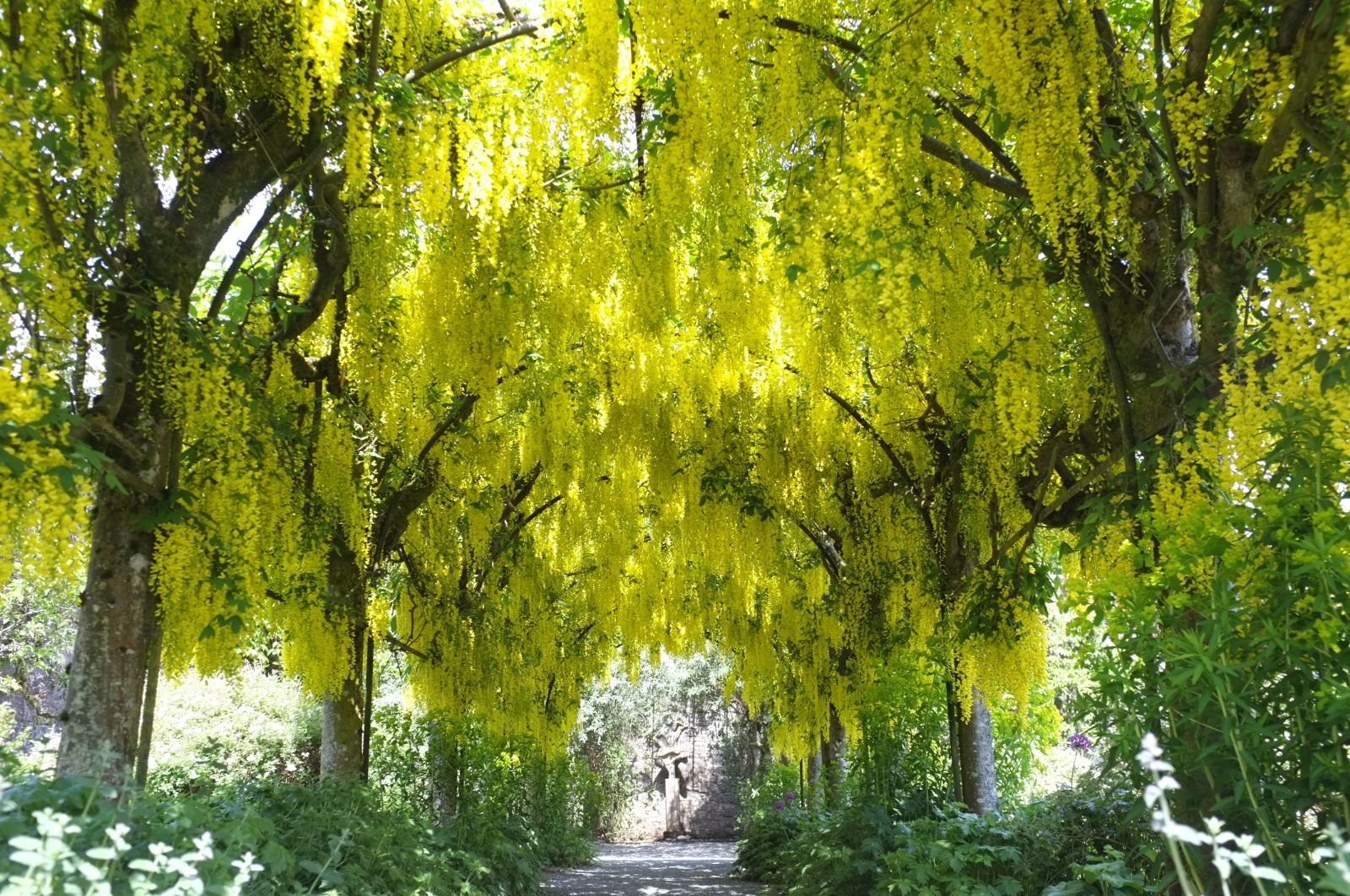Laburnum
Credits
Article from Bean's Trees and Shrubs Hardy in the British Isles
Recommended citation
'Laburnum' from the website Trees and Shrubs Online (treesandshrubsonline.
Family
- Leguminosae
A genus consisting of three species, two of them small trees, one shrubby, together with some hybrids and numerous varieties. Laburnum is very closely related to Cytisus, differing chiefly in the structure of the seed. The leaves are composed of three leaflets, and the flowers are produced in pendent racemes on the arborescent species, and in erect ones on the shrubby one (L. caramanicum).
Few trees of a similar character are so beautiful as the two common laburnums. When fully in flower, and laden with streaming racemes of golden colour, as they usually are in late May and June, nothing can surpass them in effectiveness. The German popular name, ‘Golden Rain’ (Goldregen) is peculiarly appropriate. They look their best in a group of three to six trees, with a dark evergreen mass, like holly or holm oak, behind them. Of very easy culture and raised readily from seed, no special directions are needed for their treatment. The garden varieties and hybrids are propagated by grafting or budding. They thrive in any soil that is not waterlogged. It is often advisable to remove the seed-pods as soon as the flowers are past. In some seasons the trees develop and ripen enormous crops of pods, and this, besides being of no value or beauty, is apt to induce a stunted condition of growth and reduce succeeding crops of blossom. Laburnums are not particularly long-lived, and attention to this matter will be repaid, especially in the case of valued or fine specimens, by increased longevity. They should be firmly staked after planting.
The seeds contain a poisonous alkaloid, and children have been known to die from eating them when green. The heart-wood of the trunk is of a dark colour and very hard; it is sometimes used as a substitute for ebony, occasionally also for furniture making. Many trees and shrubs of the Leguminosae can be grafted on laburnum, and the abundance of its seed and easy cultivation have made it very much used as a stock for many of its allies.
A monograph on Laburnum by Wettstein was published in Oester. Bot. Zeitschr., Vol. 40 (1890), pp. 395–399, 435–439; Vol. 41 (1891), pp. 127–130, 169–173, 261–265.



